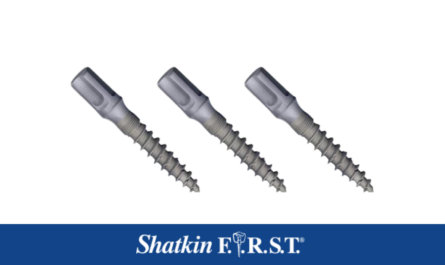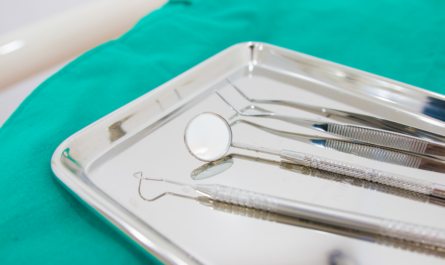By Rhonda Mullins
Disclaimer: Rhonda Mullins is the inventor/creator of Care-Driven® Dentistry, the C4 Yourself® Leadership and Management Principals, and the 4-C concept. This magazine and its entities hold no financial interest in the espoused rationales developed and utilized solely for her purpose as a dental consultant.
In recent years, research has indicated a link between oral health and overall health. Until this connection, oral health was considered independent of other health conditions, and dentistry focused mainly on oral maintenance and tooth repair.
Today, it has been accepted that comprehensive oral care is not only advantageous, but necessary in managing diabetes, coronary heart disease, and reducing premature mortality.1 A thorough examination of the oral cavity, including a salivary analysis, and examination of craniofacial tissues can provide early indications for oral cancer, microbial infections, clues to the health of internal organs, immune disorders, gland function, systemic disorders, and overall general health.2 In addition, the medical community is recognizing the importance of treating the physical, social, psychological, and emotional elements of a patient inclusively. As a result, dental practices are moving away from problem-solving, task-focused dentistry and toward a pro-active, Care-Driven® approach.
Dentistry and Psychology
According to studies, 70% of visits to primary care physicians are due to psychological factors such as generalized anxiety, depression, and stress.3 These issues can and do affect patients when confronted with oral health decisions. According to a study done by the Department of Sociology at McDaniel College, 50% of the study participants suffered from dental anxiety4 which can account for many missed or delayed treatments. Research indicates several elements associated with dental anxiety including the patient’s general perception of dentists and of their particular dentist,5 memories of previous painful or negative dental experiences,5,6 being treated in a detached and uncaring manner,5,7 lack of control over a possibly painful procedure,5,8 and fear of ridicule for appearing fearful or anxious.5
The interaction between clinical and psychosocial factors has gone largely unacknowledged in dental schools and the dental community. Research indicates the relationship between the patient and dentist rates most important for patient satisfaction and compliance.9 Interestingly enough, treatment acceptance and decision-making, are attained based upon non-clinical factors including the dentists personality, communication style, their compassion and ability to relate, their style of evaluation and diagnosis, all of which result in the development of trust or distrust. The patients that trust their dentists rely on their intuition, knowledge and judgment regarding treatment recommendations and outcomes.10
A research study performed by the Case School of Dental Medicine included 120 dental practices and recorded 3,803 patient/dentist/hygienist interactions and found that although dentists do utilize communication and comfort strategies, their inconsistency leads to missed opportunities.9 Because patients feel vulnerable while in a dentist’s chair they appreciate all and any signs of compassion, even the slightest reassurance goes a long way toward comforting the patient and cultivating a trusting relationship. According to patient surveys, communication skills among dentists are considerably lacking and consistently rated as unsatisfactory.9 Patients desire open and honest communication from their practitioners specifically during the procedure but also regarding treatment, expectations, and outcome. With all the studies available regarding dental anxiety there are few demonstrating how to relieve it, how to make patients comfortable, and keep them coming back. Below are some strategies. Most cost nothing and are easy to incorporate into your practice to provide a caring and compassionate experience for each and every patient.
Communication
Continue to communicate during the procedure by simply asking how the patient is doing every so often.9 Be intuitive and aware of the patient’s body language in case they are embarrassed to signal that something is wrong. Communicate with a touch, a pat of the hand, or by gently rubbing their arm.9 Even subtle physical contact can relieve stress and anxiety and is symbolically sharing their pain.11
Explain the steps you are taking, why, and what the patient should expect. For instance, tell them what instrument you are using, what it is for, and whether they should expect to feel pressure, a vibration, or pain.9 For those patients suffering from dental phobia’s you might allow them to come in prior to, or earlier on the day of the appointment to meet the team, view the equipment, and become familiar with your practice.9
Pharmacology
Use a topical gel before administering anesthesia. Be sure to wait for anesthesia to take effect before beginning treatment. Create a signal the patient can use to get your attention if they are having a problem.9
Environmental Distractions
Although the suggestions here can range anywhere from free to costly based upon choice, they are all viable options. For instance, scenic murals give the patient something to focus on other than the treatment. Dimming the lights and playing a relaxation CD provides distraction and alleviates stress, massage chairs provide comfort, TV’s provide pleasure and distraction, and headphones for CD’s or TV tune out the sound of the drill.9
Patients want to trust their practitioner, be treated warmly, know they are cared for, and that their concerns are being addressed.12 Care-Driven® dentistry acknowledges the psychosocial elements of the patient/dentist relationship and takes patient comfort and concerns into consideration.
Care-Driven® Dentistry
Most dental practices commonly rely on a transaction method of service. Care-Driven® dentistry is transformational. Rather than being a number or a “transaction” the dentist, team members, and staff tend to patients on a physical and emotional basis by being attentive to their needs and desires, and addressing their concerns. Patient questions are answered thoroughly and respectfully. Their personality, feelings, fears, and applicable life circumstances are taken into consideration when treatment decisions are made. They are not rushed in and out, or treated like a timed transaction. That’s because the dental staff takes a genuine interest in their well-being.
The distinguishing difference between transactional and transformational – dentistry performed in a Care-Driven® manner – is the propensity of the latter toward empathy and emotion rather than logic and practicality. While dentistry is a business, it is also a helping profession, and studies rate empathy as the highest priority among dental patients.13 Empathy encompasses communication, sincerity of interest, and understanding patient needs,13 and is a crucial element in a Care-Driven® dental practice. It contributes to feelings of comfort, helps decrease the prevalence of fear and anxiety associated with dental treatments, and encourages trust, promoting the doctor-patient relationship.
Benefits to Patients
In a Care-Driven® practice, the patient is treated as more than a number. They are a person with needs and desires, and a valued asset to the dental practice. The dental team cultivates long-term professional relationships with their patients, building trust, resulting in higher levels of patient satisfaction. Research utilizing the Importance-Performance Analysis (IPA), which evaluates patient and customer satisfaction with services, indicates that patients report higher rates of satisfaction having experienced dentistry with a Care-Driven® approach.14 Although patients want top-notch care, a driving factor in choice of a clinician is the overall experience – how the patient is treated and how they feel during the visit. A large part of our decision making process is based on how we feel in any given situation. If the patient feels they are not the priority or that they have not been heard because they are rushed and uncomfortable, they will not gain trust in the dentist and team, when diagnoses, recommendations, and conversations take place. Thus, they’re positioned to make the decision not to execute care or return as a patient of record. However, if they feel you are present with them emotionally, focused on their desired outcome by demonstrating a welcoming attitude, valued like a familiar friend, they will feel relaxed and valued.
A transformational experience provides numerous benefits to patients, including comfort, increased responsiveness from the dentist and dental team and staff, decreased pain, confidence in care, and improved communication that results in increased clarity as to what to expect and other important details of treatment. Not only do these elements decrease dental anxiety, they encourage trust and foster a long-term relationship.
Benefits to the Dental Team
Research indicates that happy employees feel their jobs are meaningful and provide a sense of mastery, purpose and personal identity which, in turn, produces fulfillment – the key to job satisfaction.15,16 Albeit dentistry has always had purpose, to help maintain healthy and esthetically pleasing teeth, working in a practice that recognizes the importance of treating patients comprehensively gives those in the profession the chance to connect on a more personal level with their patients and help them fulfill their desires and calm their fears. This contributes to job satisfaction and a renewed passion for their work. For professionals in a helping profession, they find this new way of caring for patients invigorating and worthwhile. Delivering treatments beyond patient expectations instills a sense of pride, and not only do the patients feel valued but so do the employees. Appreciation also ranks high in job satisfaction.15 When employees feel valued and appreciated by thankful patients and by the dentist for providing patients with optimal care, and when they find their work meaningful and fulfilling, they become invested in what they do and do it well, benefitting everyone involved.
How to Develop a Care-Driven® Practice
It doesn’t take much to transform transactional into transformational dentistry, merely a change in philosophy and dedication and commitment to the key fundamentals in business significance:
- Clear Vision
- Practice Systems
- Solution Strategies
- Consistent Execution
A Care-Driven®philosophy begins with a daily “others” attitude which can be incorporated by simply anticipating your team’s needs and your patient’s needs on a more conscious level. Consider questions such as “Why are we here?” “Why has this patient chosen us to care for them?” “How can we serve this patient in a greater capacity?” “What can we do to be our best for them?” “What can we do to show we care?” “What can we do to make this experience significant for them in the short term and long term?” “How can we over anticipate their needs and exceed their expectations?”
Be ready to take action to address their specific concerns. One way is to practice “reflective listening” which is not just listening but “hearing” what your patients say and understanding their feelings, concerns and fears. Once you’ve heard what your patients have said, paraphrase their sentiments so they are certain you heard and understood.12 If the patient is worried about pain and discomfort, discuss ways to address it and reassure them that you will take every precaution against it.4 If the patient fears gagging or choking, offer a solution to eliminate their fear, i.e., table salt on the tongue.4
Dr. McDougall, licensed in both dentistry and psychology, finds it very helpful to ask his patients about prior bad experiences and to address their concerns at length. He and his team maintain communication throughout the procedure by explaining their actions, warning them if there will be pain or discomfort, and allowing them to stop the procedure if they have questions, concerns, or pain. This is helpful for patients who fear lack of control over the procedure.12 It is important that all members of the dental staff and team consistently adopt the communication style and style of interaction that will make your patients most comfortable.
The results of the McDaniel College Research indicate that 93% of respondents preferred a friendly dentist, and 82% prefer they be talkative, which indicates openness and amicability.4 They also prefer they wear formal white lab coats rather than scrubs.4 The research uncovered clear patient preferences regarding the physical environment as well. Patients promote decorating walls with pictures, posters, and other odds and ends; recommend the waiting area be supplied with a variety of books and magazines; suggest relaxing background music; indicate that cooler temperatures are more comfortable; and suggest doors between the treatment rooms and waiting room be closed to eliminate irritation and anxiety occasioned by the sound of the drill.4
Care-Driven® dentistry goes above and beyond patient expectations. This is accomplished by realistic expectations, under promising and over delivering. Provide extraordinary performance in key areas such as customer care, communication, commitment, and professional and consistent execution.
Regarding communication, hone your skills to include understanding, cooperation, warmth, approachability, and friendliness. These traits are powerful when a patient is fearful or anxious regarding a dental procedure. Finally, provide comprehensive care utilizing a quality multi-disciplinary team committed to serving patients with the highest degree of kindness and respect, while providing them with optimum results.
Transactional Moments vs. Transformational Moments
Care-Driven® dentistry provides transformational moments as opposed to transactional moments. Transactional moments are task focused. For instance, the receptionist checks the patient in, the dental assistant calls the patient when it’s their turn, the dentist fills the cavity then sends the patient to pay. Little conversation takes place besides “hello,” the patient’s name being called, the dentist greeting and seating them, culminating with the receptionist telling them how much they owe. A cleaning would play out in a similar manner. The hygienist would greet and seat, ask a few routine questions, perform the cleaning, send the patient to pay, etc. It is a task-focused transaction that includes checklists, routine questions, mechanical responses, and a lot of telling (without listening first).
Transformational moments elicit positive emotions, i.e. happiness, appreciation, trust. We have all been at an appointment, dental or otherwise, when a friend of the dentist, hygienist, or other team or staff member was scheduled for an appointment. There were smiles, laughing and joking, meaningful conversation, and sincere concern. You might have heard them asked, “How did that filling turn out for you?” or “Are you loving your veneers? They look great!” They were treated like a celebrity. You may have wondered why you’re not treated that way. That is the difference between transformational and transactional dentistry. Their interaction with you was transactional, but the interaction with their friend was transformational or Care-Driven®.
It’s not hard to turn transactional moments into transformational moments.
Consider the following suggestions:
Transactional: Focus on changing the patient’s habits by telling.
Transformational: Focus on changing how the patient thinks through discussion.
Transactional: Focus on time management.
Transformational: Focus on the patient.
Transactional: Tell patients what they need to hear.
Transformational: Ask patients how they feel and influence them to action.
Transactional: Think logically.
Transformational: Think emotionally.
Transactional: Be a problem solver.
Transformational: Be a solution finder.
Benefits to Dentist and Dental Practice
Because effective communication increases the quality of the multi-disciplinary team and dentists/patient relationship which, in turn, increases patient satisfaction, retention, and referral, and because research indicates unsatisfactory relationships between dentist and patient as the major reason patients seek different oral care providers,17 practicing Care-Driven® dentistry and establishing strong and valued dentist/patient relationship is advantageous to the dentist and the success of their practice. Cultivating a trusting relationship with patients encourages patient retention and case acceptance, resulting in productivity and profitability.
Conclusion
According to the Managed Care Task Force of the American Dental Trade Association, at the beginning of the decade, U.S. patients were dissatisfied with the lack of communication and patient awareness exhibited by dentists.18 No longer interested in being simply a time slot, patients expect comprehensive treatment from practitioners invested in the outcome of their care. Historically, dentists defined their role as clinicians of oral health care and maintenance, yet, as other medical professionals, their business is to serve people. Utilizing their professional medium, dentists help people by transforming lives via education, hopefulness, self-esteem, improved oral health, and subsequently, better overall health. Collaborative communication between the dentist and patient is a priority. It is the most effective way to improve the quality of their relationship and increase patient satisfaction.19 The dentist’s behavior and interpersonal skills, the time and attention they devote to the patient, followed by the comfort level and relationship between the patient and dental teams, and knowledge of the patient’s treatment needs all rate highly as factors influencing patient loyalty.20 For Care-Driven® dentistry, standards are imperatively raised. Therefore, the patient is under promised yet receives optimum outcomes beyond their expectations.
Self-Evaluation Quiz:
1. Examination of the oral cavity can provide information regarding
A.Microbial infections
B.Anxiety and depression
C.Systemic disorders
D.Both A and C
2. Care-Driven® dentistry is:
A.Transformational
B.Transactional
C.Transformational and transactional
D.Neither transformational nor transactional
3. Transactional dentistry:
A.Tends to the patient’s physical and emotional well-being
B.Is problem oriented
C.Both A and B
D.None of the above
4. Transformational dentistry:
A.Tends to the patient’s physical and emotional well-being
B.Is problem oriented
C.Both A and B
D.None of the above
5. Care-Driven® dentistry provides:
A.Comfort
B.Increased responsiveness
C.Improved communication
D.All of the above
6. Job satisfaction is highly determined by:
A.The size of the practice
B.A sense of purpose
C.Appreciation
D.Both B and C
7. To change a transactional moment into a transformational moment:
A.Make the appointment short and sweet
B.Charge more money
C.Focus on the patient not on the time
D.Call the patient by their first name
8. Feelings of happiness, appreciation, and trust are elicited by:
A.Transactional moments
B.Transformational moments
C.A canceled appointment
D.Anesthesia
9. Unsatisfactory relationships between dentists and patients cause:
A.Ulcers
B.Tooth aches
C.Patients to seek different oral care providers
D.Migraines
10. Care-Driven® dentistry:
A.Is less expensive
B.Is more expensive
C.Over promises and under delivers
D.Under promises and over delivers
Rhonda Mullins is a dental practice development strategist who combines business savvy, clinical aptitude, and transitional analysis to inspire successful changes for her clients. An L.D. Pankey Institute and Dawson Academy trained dental laboratory owner/technician, Ms. Mullins launched her consulting company in 1993 and today is an accomplished lecturer, educator, and consultant and has authored numerous articles in dental publications about achieving optimum results through practice transformations and incorporating Care-Driven® dentistry. For more information Ms. Mullins can be reached at: [email protected] or [email protected]. www.rhondamullins.com
References:
- Barnett ML. The oral-systemic disease connection. An update for the practicing dentist. J Am Dent Assoc. 2006 Oct;137 Suppl:5S-6S. 137 no. suppl 25S-6S.
- The World Oral Health Report 2003 Continuous improvement of oral health in the 21st century – the approach of the WHO Global Oral Health Programme Poul Erik Petersen Oral Health Programme Noncommunicable Disease Prevention and Health Promotion World Health Organization Geneva, Switzerland World Health Organization 2003.
- Psychologists and Integrated Primary Health Care. American Psychological Association. http://www.apa.org/about/gr/issues/health-care/integrated-primary.aspx. Accessed July 31, 2012.
- Bare LC, Dundes L. Strategies for Combating Dental Anxiety. Journal of Dent. Ed. 2004; 68(11):1172-1176.
- Levin RP. Helping your patients overcome dental phobia. Compend Contin Educ Dent. 2003;24:8–10.
- Eli I, Uziel N, Baht R, Kleinhauz M. Antecedents of dental anxiety: learned responses versus personality traits. Community Dent Oral Epidemiol 1997;25:233–7.
- Maggirias J, Locker D. Five-year incidence of dental anxiety in an adult population. Community Dent Health 2002;19:173–9.
- Abrahamsson KH, Berggren U, Hallberg L, Carlsson SG. Dental phobic patients’ view of dental anxiety and experiences in dental care: a qualitative study. Scand J Caring Sci. 2002;16:188–96.
- Abbe M, Sudano JJ Jr, Demko CA, Victoroff KZ, Williams K, Lalumandier JA, Wotman S. Revisiting comfort: strategies observed in the direct observation study. Gen Dent. 2007 Sep-Oct;55(5):420-5.
- Redford M, Gift HC. Dentist-patient interactions in treatment decision-making: a qualitative study. J Dent Educ. 1997 Jan;61(1):16-21.
- Carey B. Evidence That Little Touches Do Mean So Much. New York Times. February 22, 2010.
- Henry K. A different perspective: A dentist and psychologist talks about patient relationships. Dentistry IQ.com. Accessed July 31, 2012.
- Karydis A, Komboli-Kodovazeniti M, Hatzigeorgiou D, Panis V. Expectations and perceptions of Greek patients regarding the quality of dental health care. Int J Qual Health Care. 2001 Oct;13(5):409-16.
- Dewi FD, Sudjana G, Oesman YM. Patient satisfaction analysis on service quality of dental health care based on empathy and responsiveness. Dent Res J (Isfahan). 2011 Oct;8(4):172-7. Holt VP, McHugh K. Factors influencing patient loyalty to dentist and dental practice. Br Dent J. 199 Nov 22:183(10); 365-70.
- Gardener M. Seven things employees want most to be happy at work. The Christian Science Monitor. January 28, 2008.
- A Survey Report by the Society for Human Resource Management. 2009 Employee Job Satisfaction: Understanding the Factors that Make Work Gratifying. June 28, 2009.
- Kasteler, J, Kane RI, Olsen DM, Thetford C. Issues underlying prevalence of ‘doctorshopping’ behaviour. J Health SocBehav. 1976;17: 328-33.
- Managed Care Task Force of the American Dental Trade Association. The American dental trade association looks at dental reimbursement: responsible consumption of appropriate dental services. J Am Coll Dent. 1998;65: 7-16.
- DiMatteo MR. A social-psychological analysis of physician-patient rapport: toward a science of the art of the medicine. J Soc Issues. 1979;35: 12-33.
- Holt HP, McHugh K. Factors influencing patient loyalty to dentist and dental practice. Br Dent J. 1997. Nov 22;183(10): 365-70.





